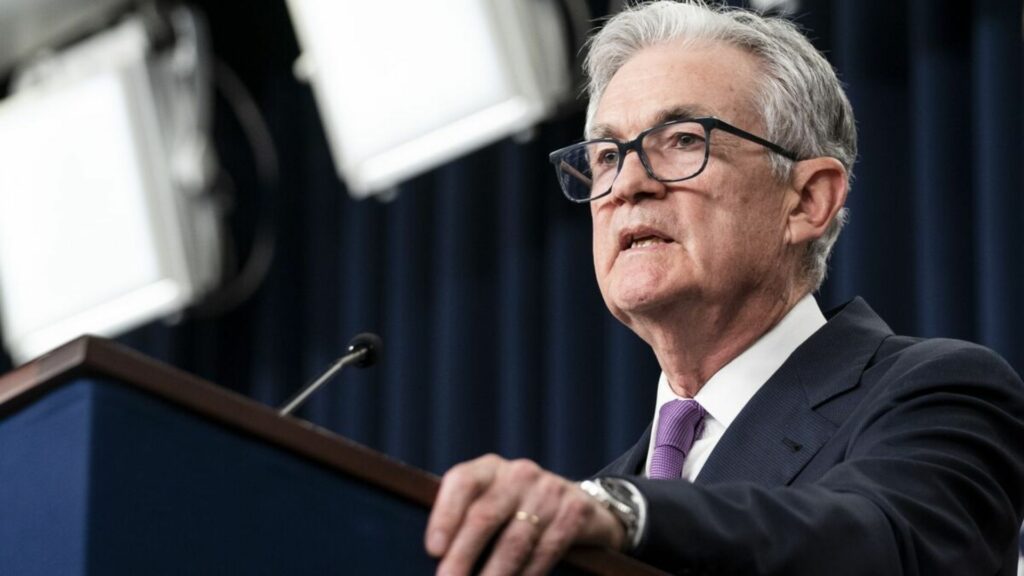The Federal Reserve remains at the centre of economic discussions following the release of its latest FOMC meeting minutes.
In his speech, Chair Jerome Powell outlined the central bank’s stance on monetary policy and addressed key concerns about inflation, trade policies, and broader economic uncertainties.
While the decision to hold interest rates steady was expected, Powell’s remarks and the minutes provided deeper insight into the Fed’s current thinking.
The discussion focused on inflation and employment and how fiscal and trade policies under the Trump administration could shape the Fed’s next moves.
Rather than setting a clear direction, the minutes reflected a cautious and measured approach, with policymakers weighing both risks and opportunities in the evolving economic landscape.
Concerns About Inflation and Trade Policy
One of the most significant points in the meeting was the uncertainty surrounding inflation. While price pressures have eased over the past few months, they remain above the Fed’s 2% target, and policymakers are not convinced that inflation will continue to fall in a stable manner.
The minutes revealed that officials are particularly concerned about external factors that could push prices higher again.
A major issue discussed was the potential impact of Trump’s trade policies. The president has already introduced tariffs on certain goods and has signalled further increases, particularly in sectors such as automobiles, pharmaceuticals, and semiconductors.
If these tariffs lead to higher production costs, businesses may pass these costs on to consumers, which could slow inflation’s decline or even cause new price increases.
The Fed also discussed broader fiscal policy concerns, including the possibility of tax cuts and regulatory changes under Trump’s administration.
While some officials noted that these policies could encourage economic growth, others warned that they might also contribute to higher inflation if they lead to increased consumer spending and demand.
This debate highlights the challenge the Fed faces. While it wants to support economic stability, it also needs to be cautious about new risks that could interfere with its efforts to bring inflation fully under control.
Why the Fed Maintains a Cautious Approach
Powell’s speech reflected a carefully balanced stance, with no immediate plans for policy changes but a recognition that adjustments may be needed later in the year.
The minutes showed that discussions among Fed officials included both concerns about inflation staying high and considerations for potential rate cuts if economic conditions evolve as expected.
Reasons for a More Restrictive Approach
Many policymakers remain cautious about inflation. Although recent data suggests that price pressures are not increasing further, some members of the committee believe that inflation could remain above target for longer than anticipated.
If trade policies raise costs or if fiscal stimulus leads to higher demand, there is a risk that inflation could become more persistent, making it difficult for the Fed to justify easing monetary policy.
Another point raised in the discussion was the importance of credibility. The Fed has spent the past two years taking a firm stance on controlling inflation, and some officials are concerned that easing too soon could undo the progress made so far.
A premature rate cut could create uncertainty in financial markets and potentially trigger new price pressures.
Considerations for a More Supportive Approach
Despite these concerns, some policymakers believe that conditions may soon allow for rate cuts. Inflation is not accelerating, and some officials pointed out that the current level of interest rates is already restrictive enough to slow economic activity.
If inflation continues to decline in the coming months, the Fed may consider lowering rates to prevent economic conditions from tightening too much.
The labour market was also discussed, with officials noting that employment remains strong but showing signs of gradual cooling. If the job market slows significantly, the Fed may need to adjust its policy to prevent unnecessary economic strain.
While there is no urgency to make immediate changes, some members indicated that rate cuts could be justified later in the year if inflation remains on track and economic risks increase.
Conclusion
The Fed’s stance remains flexible, with no fixed timeline for policy changes. Powell’s speech and the meeting minutes made it clear that future decisions will depend on how inflation, employment, and trade policies evolve over the coming months.
There is still uncertainty about how Trump’s economic policies will affect inflation, and Fed officials are watching closely for signs that businesses and consumers are adjusting to new conditions.
For now, Powell’s message is clear, which is that the Fed will not rush into any policy shifts but will continue monitoring economic data before making any adjustments.
This means that interest rates are likely to remain at their current levels for the time being, but a change could come later in the year if conditions allow.

